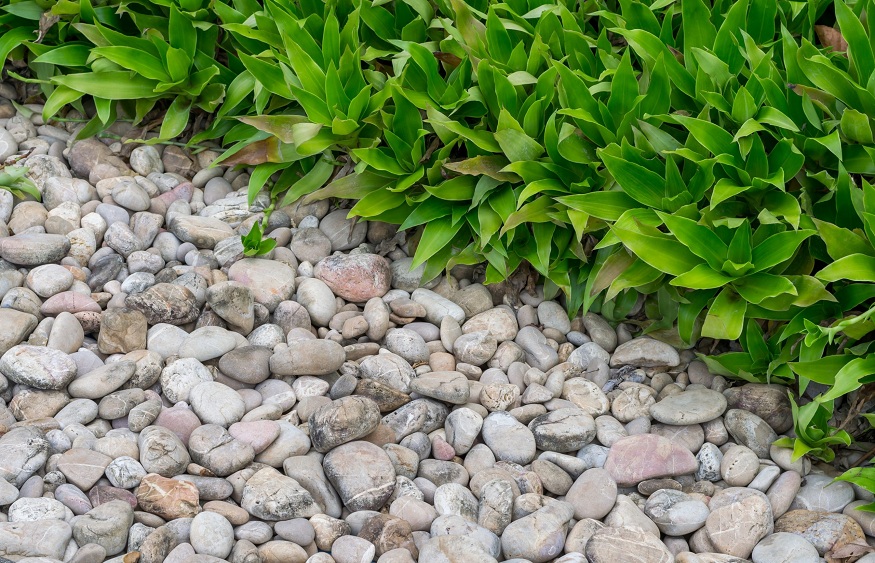Embarking on a landscaping project is akin to painting a picture with nature, where every stone plays a pivotal role in the overall aesthetic. Rocks are not mere functional elements that define paths or borders; they enhance the natural beauty and add texture to your landscape design. However, the central question remains – how does one select the ideal rock size to transform a garden into an outdoor sanctuary?
2. The Bedrock of Design: Assessing Your Space
Before plunging into the myriad of choices available, take stock of your canvas – the landscape itself. Key factors such as the plot size, existing plant life, and intended design theme dictate the scale of rocks required. A vast expanse may call for boulders to make a statement, creating focal points around which the greenery can flourish. Conversely, smaller plots benefit from medium-sized rocks that do not overwhelm but coalesce harmoniously with petite plant forms.
2.1 Understanding Scale
Envision the space from various perspectives. Boulders might tower impressively, yet in a sprawling garden, they can appear as mere pebbles unless used judiciously. Similarly, gravel and pea-sized stones can seem inconsequential in large areas but work wonders in snug confines, providing a delicately textured ground cover.
2.2 Theme Consistency
Whether you’re crafting a Japanese Zen garden or forging a rugged wilderness, the rock sizes should echo the theme. Rocks have stories; let them narrate yours. For instance, smoother, rounder stones suggest tranquility, while jagged, angular rocks imbue a sense of untamed nature.
3. Strength in Variety: Mixing Sizes for Depth
Uniformity has its place, yet often, it’s the eclectic mix that brings a landscape to life. Introducing a variety of rock sizes can instill depth and create a more organic feel, mimicking the haphazard elegance of nature’s own artistry.
3.1 Layering for Effect
Consider pairing large statement rocks with smaller, supporting stones to guide the eye through the panorama. It’s the interplay between sizes that grants character and dimension to the tableau.
3.2 Transitioning Zones
Use different rock sizes to delineate areas within your space subtly. Smaller aggregates can be perfect for paths, gently leading to grander rock displays, which signify a destination or resting place.
4. Balancing Practicality with Poesy
Juggling aesthetics with functionality is the fulcrum on which effective landscaping rests. Rocks serve a multitude of purposes, from preventing soil erosion to aiding drainage. Here, size plays a practical part, as larger rocks offer stability to sloped terrain, and small stones facilitate water filtration.
4.1 Erosion Control
Heavier rocks anchor the soil, especially critical in inclines where rain can easily wash away the earth. Use sizeable rocks strategically to fortify these vulnerable spots.
4.2 Drainage Solutions
Pea gravel and similar sized stones are champions of proper drainage, crucial to prevent waterlogging and ensuring plant health.
5. In Conclusion: Harmony and Intent
Selecting the right size rock for your landscaping project is less about strict rules and more about intuition guided by principle. Consider the spatial dialogue between the rocks and their living counterparts, aim for balance and unity, and allow function to inform your creative choices.
In the dance of design, each element has its rhythm, and size governs the pace. Let your rocks set a tempo that resonates with the spirit of the space, crafting scenes that stir the soul and ground the senses.
For more information on rock sizing, don’t hesitate to reach out to an expert at West Valley Rock. Give West Valley Rock a call today to get guidance on your project or request a sample. 623-386-8777
Questions & Answers
Can using a variety of rock sizes really make a difference in landscaping?
- Absolutely! Layering different sizes adds depth and makes the space more dynamic and visually appealing.
What size rocks are best for controlling erosion?
- Larger, heavier rocks are ideal for stabilizing soil and preventing erosion, especially on slopes and banks.
Are there any special considerations for rock size when focusing on drainage?
- Yes, smaller stones such as pea gravel are excellent for facilitating good drainage and preventing water accumulation.

